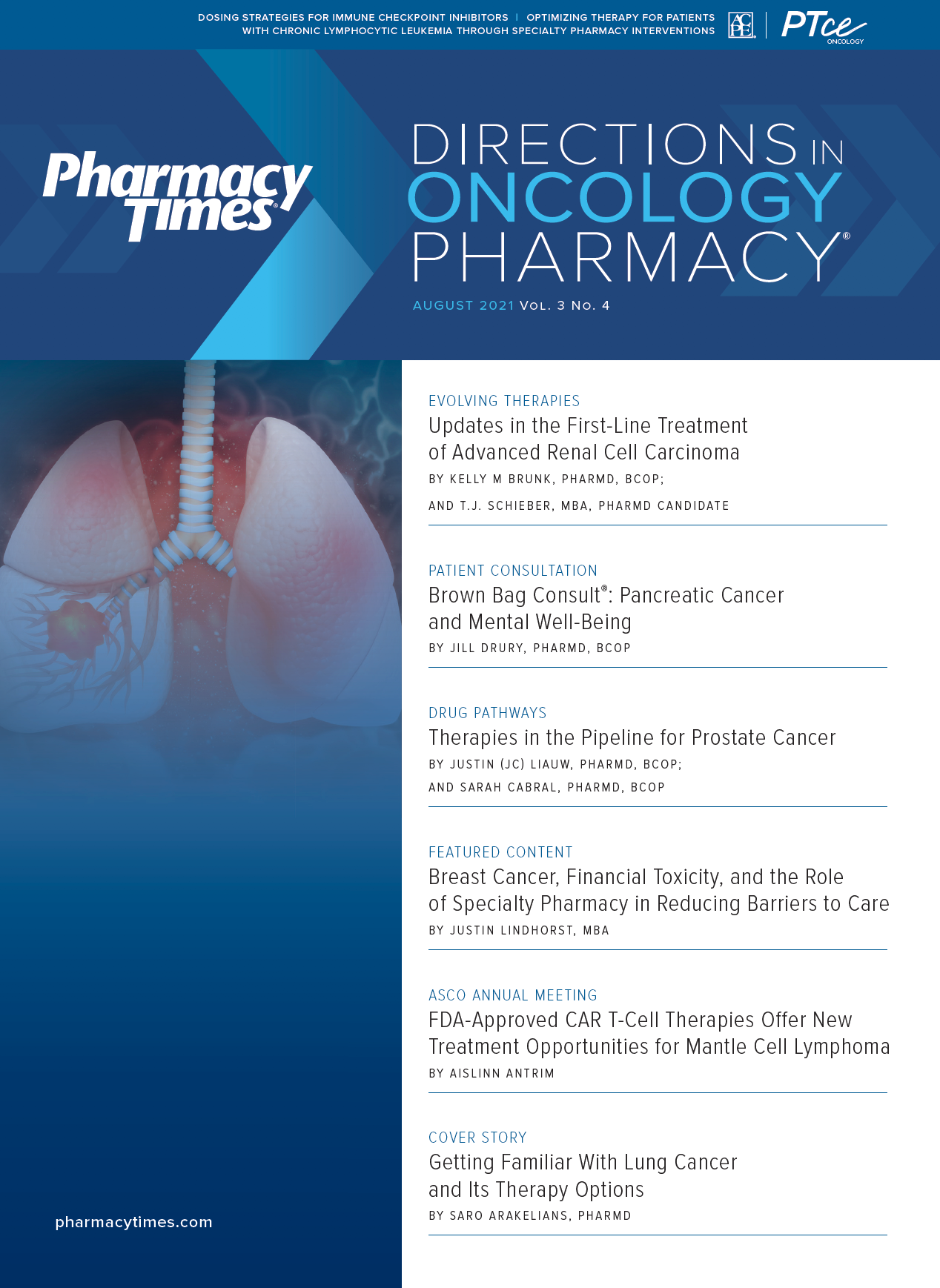Publication
Article
Pharmacy Practice in Focus: Oncology
Lung Cancer Treatment Is Continuously Moving Forward
Author(s):
As treatments for lung cancer move forward and patient care services continue to expand, the role of the pharmacist in oncology is critical.
Lung cancer is notoriously deadly. According to the American Cancer Society, carcinoma in the lungs accounts for nearly 25% of all cancer deaths among men and women. More people die of lung cancer each year than from colon, breast, and prostate cancers combined.1
Lung cancer is also one of the most common forms of carcinoma. In the United States, approximately 235,760 new diagnoses of lung cancer and 131,880 deaths attributed to lung cancer this year.1
It’s no wonder there are many drug therapies available for patients with the disease as well as potential treatments in the pipeline that may help further improve outcomes. This month, Directions in Oncology Pharmacy looks closely at lung cancer and provides timely drug information for oncology pharmacists.
In our cover story, on page 36, author Saro Arakelians, PharmD, provides an overview of lung cancer, including its risk factors and symptoms. Current treatments on the market, including monotherapies and common drug combinations, are also discussed.
On page 32, the pharmacology of cutting-edge therapies for non-small cell lung cancer (NSCLC), including oral inhibitors, is explored. This information was recently presented at the American Society of Clinical Oncology (ASCO) Annual Meeting.
Additionally, new therapies for NSCLC, which makes up about 84% of all lung cancers,1 and investigational drugs are heavily featured in this month’s issue.
An article on page 15 highlights a drug that is newly approved by the FDA as well as an investigational treatment that recently received a breakthrough therapy designation.
New therapies for mantle cell lymphoma also were the subject of a session at the 2021 ASCO Annual Meeting. This session is recapped on page 34.
Although it is important that oncology pharmacists familiarize themselves with the latest therapies and the drug development pipeline, patients who receive a diagnosis of any type of cancer may require additional support. Patient care may be provided in many different ways.
For example, on page 39, author Jill Drury, PharmD, presents a case study about a patient with pancreatic cancer. The patient receives a consultation with a pharmacist who can assist with medication management.
Financial toxicity for patients with breast cancer is addressed on page 28. Author Justin Lindhorst, MBA, presents the causes and prevalence of cost burden for some patients with breast cancer, as well as the role of the pharmacist in mitigating issues with patients' ability to pay for care.
As treatments for lung cancer move forward and patient care services continue to expand, the role of the pharmacist in oncology is critical. Our goal, as always, is to provide useful, relevant information that is valuable to these professionals.
Thank you for reading.
REFERENCE
About lung cancer. American Cancer Society. Revised October 1, 2019. Accessed July 16, 2021. https://www.cancer.org/content/dam/CRC/PDF/Public/8703.00.pdf







